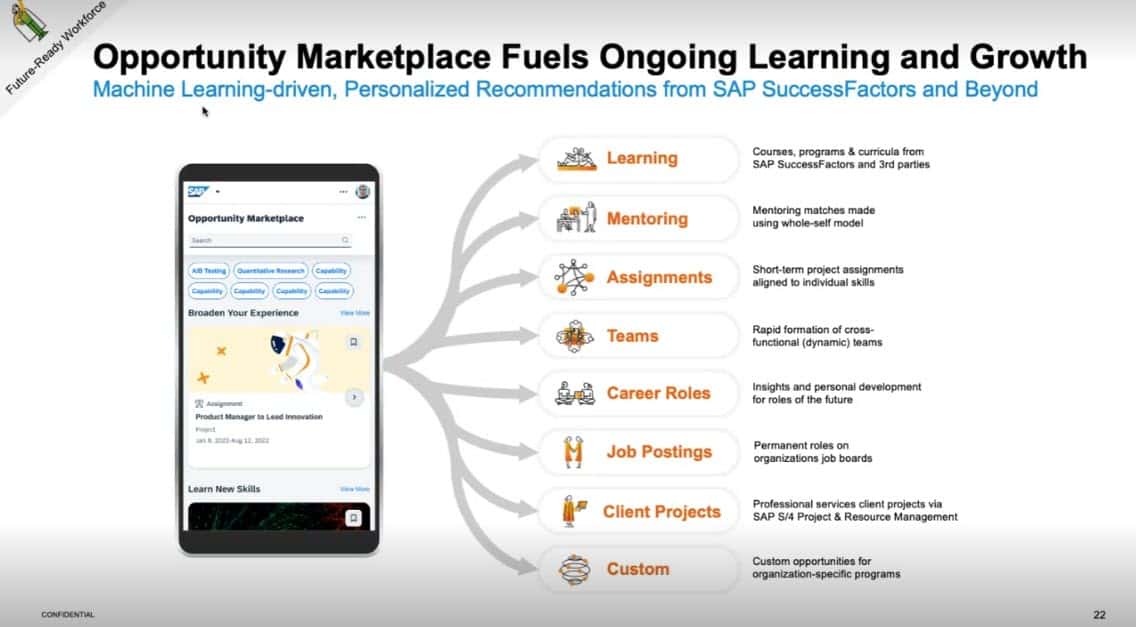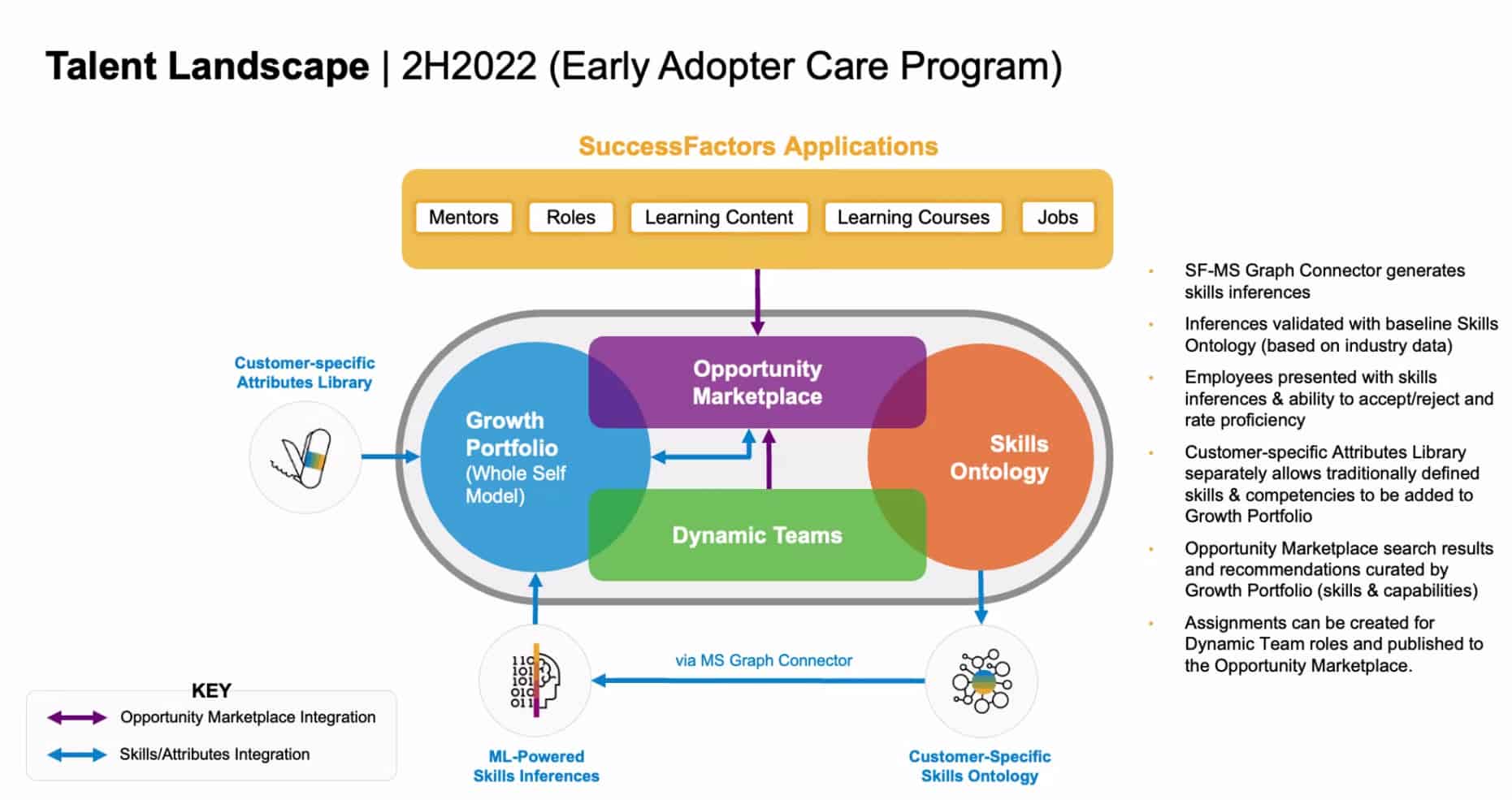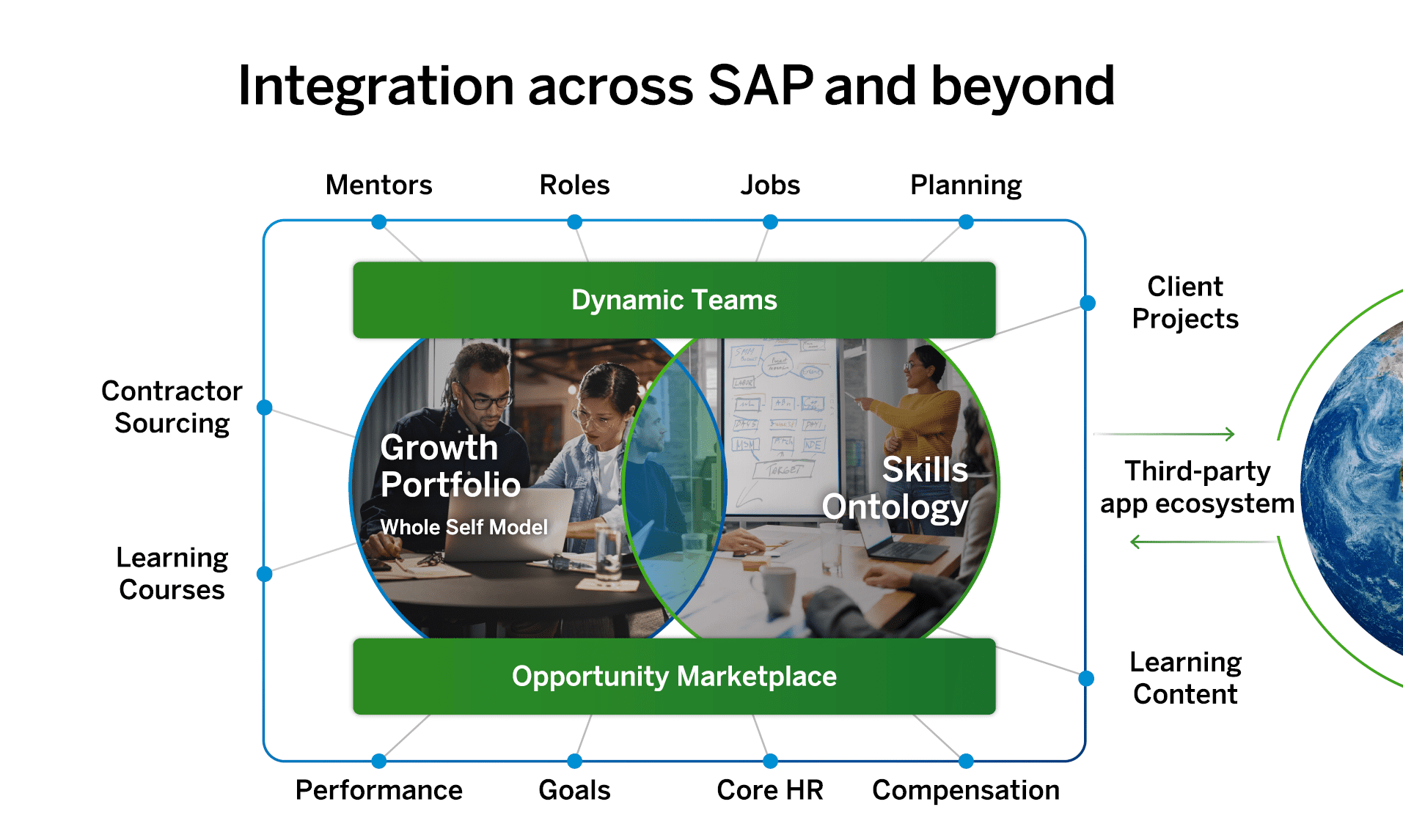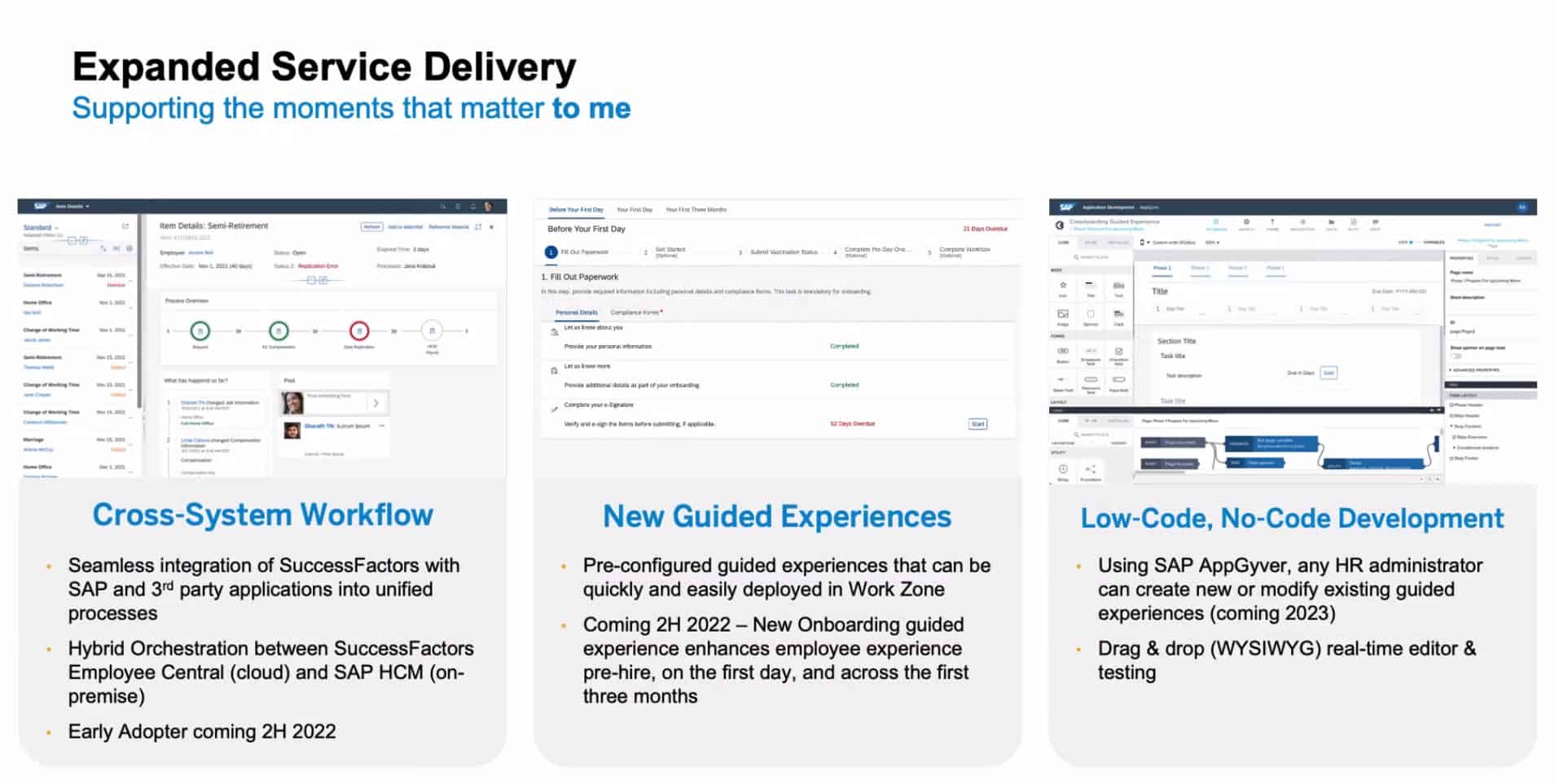SAP SuccessFactors Launches Its Biggest Release In A Decade
In a flurry of new HR Tech products released this week, one definitely warrants attention. SAP SuccessFactors, the largest HCM vendor in the world, introduced its most significant release in a decade. While it doesn’t have a specific name, I call it SuccessFactors Next-Gen HCM.
Here’s what it’s all about.
As most of you know, we’ve entered a world where employee skills, preferences, and day to day activities are under enormous stress. People work remotely, the quit rate is high, and companies are working harder then ever to find ways to support people, reskill them, and offer them new opportunities as the company grows.
SuccessFactors, a platform originally built for performance and talent management, is addressing this head on with a series of architectural updates.
The core of the new release is the SuccessFactors Opportunity Marketplace, which I see as a whole new platform in business. Rather than only offer people “career paths” or “jobs,” this platform uses the new SAP skills ontology to recommend projects, gigs, part-time work, mentors, as well as learning, growth opportunities, and even special interest groups. Yes, vendors like Gloat and Fuel50 have pioneered this market, and they are well ahead. But the SAP product is integrated into the SuccessFactors stack, making talent marketplace an integrated part of HCM.
SAP, by the way, operates this way internally, so the company understands how this should work. Within SAP people move around, take new projects, and even do “job sharing,” letting others do part of your job if you have a new child or want to work part-time. So this new offering, which is in pilot today, will offer SuccessFactors customers a very full function mobility and career development solution.
 |
While this product is new and it won’t necessarily slow down Gloat, Fuel50, or others, it tells us that talent marketplace technology has gone mainstream. And for larger SuccessFactors customers, the integrated functionality will be powerful.
Unleashing Employee Preferences: The Whole Self Model
Companies that promote internal mobility often find they need to encourage people to identify and express their preferences, styles, and needs. This helps them find the right opportunity and also helps staffing managers identify the right candidates.
So, coupled with the opportunity marketplace SAP is introducing its Whole Self Model (an employee assessment, inference, and profile that identifies preferences, work styles, and personality), a connection to the Microsoft Graph to understand work relationships and work schedules, skills inference, and tools to help companies build and import their own skills ontologies. (The Attributes Library.)
 |
SAP understands the complex nature of skills, and has built a complete model that looks at “total desires and capabilities” not just “inferred skills” from what courses or content you may have consumed.
 |
Opportunity-Centric Talent Management
And SAP is going further. While the Talent Marketplace is often seen as a “product” or set of features, it really is much more. It’s a new, modern way of thinking about pay, jobs, roles, and growth. So in a sense, it marks the end of “integrated talent management” and the emergence of “intelligent talent management,” driven by dynamic company needs, employee skills and motivation, AI, and a more flexible set of work arrangements.
Healthcare providers, for example, need employed nurses, contract nurses, travelling nurses, and part-time hourly nurses. And they need staff to help with a variety of non-certified clinical roles and projects. This is the new world of work, and SuccessFactors sees this all coming together in an integrated, intelligent way.
 |
Imagine a situation where your company is spinning up an agile team to build a new customer offering. The project lead may need a small team of experts: some from sales, some from marketing, others from product, and some from IT or analytics. With the Opportunity Marketplace this is a natural process, and people with skills and desires to do this work can “sign on.”
But the system should do more than just connect people to opportunities. It should then assemble them into a team and give the manager a set of tools to manage this new agile, possibly short-term, team. This is where SuccessFactors goes further.
Introducing Dynamic Teams
But there’s more.
Leveraging SuccessFactors’ history in performance management, the SAP team built a whole new system for the management of dynamic teams. This includes OKR-based performance management, team assembly and team coordination, and a set of partner APIs to work with project management, document management, and other collaboration tools. So if you’re trying to staff a team to work on a new project, SuccessFactors can show you who’s qualified, who’s interested, and who should take what role. And you can then set the goals (OKRs or other) and manage the team within the platform.
This moves SuccessFactors directly into the “productivity management” business.
 |
Other HCM vendors have not ventured into this yet, but Microsoft has entered this space with the acquisition of Ally.io and introduction of Microsoft Viva Goals. Vendors like BetterWorks, 15Five, Lattice, BetterUp, and CultureAmp sell tools in this space, but none have the back-end systems, learning platform, or skills technology of SuccessFactors. So for larger, global organizations, this feature set will be very interesting.
While the ideas for this software are not new, the opportunity for a large global company to operate this way is powerful. Companies like Nestle or Allianz, which have large SuccessFactors back ends, can use this technology to manage global teams at scale. Cisco tried to build a system to do this themselves (eventually using StandOut which was sold to ADP), so we know it’s a big need and also a thorny challenge.
 |
Extensive Features For Employee Experience
The third set of features, which I also describe as Next-Gen HCM, are features to improve employee experience. Here, in a steady move to build around Work Zone, the company’s integration portal and integration technology, SuccessFactors is building applications that let companies build cross-platforms journeys and “mini-apps” for employees.
 |
We recently interviewed several of SuccessFactors’ large customers and most use the system as a global business rules platform. In other words, rather than build applications in SharePoint or a remote work application, these companies build global business rules in SAP and then make sure each country, business unit, or geography can operate in a local but coordinated way.
This means most SAP customers are quite familiar with the problem of integrating Concur, SAP payroll, and other transactional systems into an EX journey (onboarding or employee family leave, for example). SuccessFactors is investing here, adding a guided experience for Onboarding and a low-code, no-code system to build more extensive journeys and employee apps.
Bottom Line: This Is Very Major Release
Taken together, these features put SuccessFactors into a strong position in the ongoing competition for HCM. Workday, of course, is not sitting still. Its Skills Cloud (now interoperable with many external systems, with more than 1000 customers), Learning platform, Extend APIs, and People Experience continue to grow. And Oracle HCM now offers a wide range of EX features in its new offering Oracle Me.
But for SuccessFactors, the biggest of all (with 73 million licensed users, 220 million total users), the company’s vision has leaped ahead. Let’s see how well it all works and how quickly the company can bring these important capabilities to market.
Additional Information
Workday Innovation Summit: Lots of Growth Ahead
HR Technology Market Disrupted: Employee Experience Is The New Core
